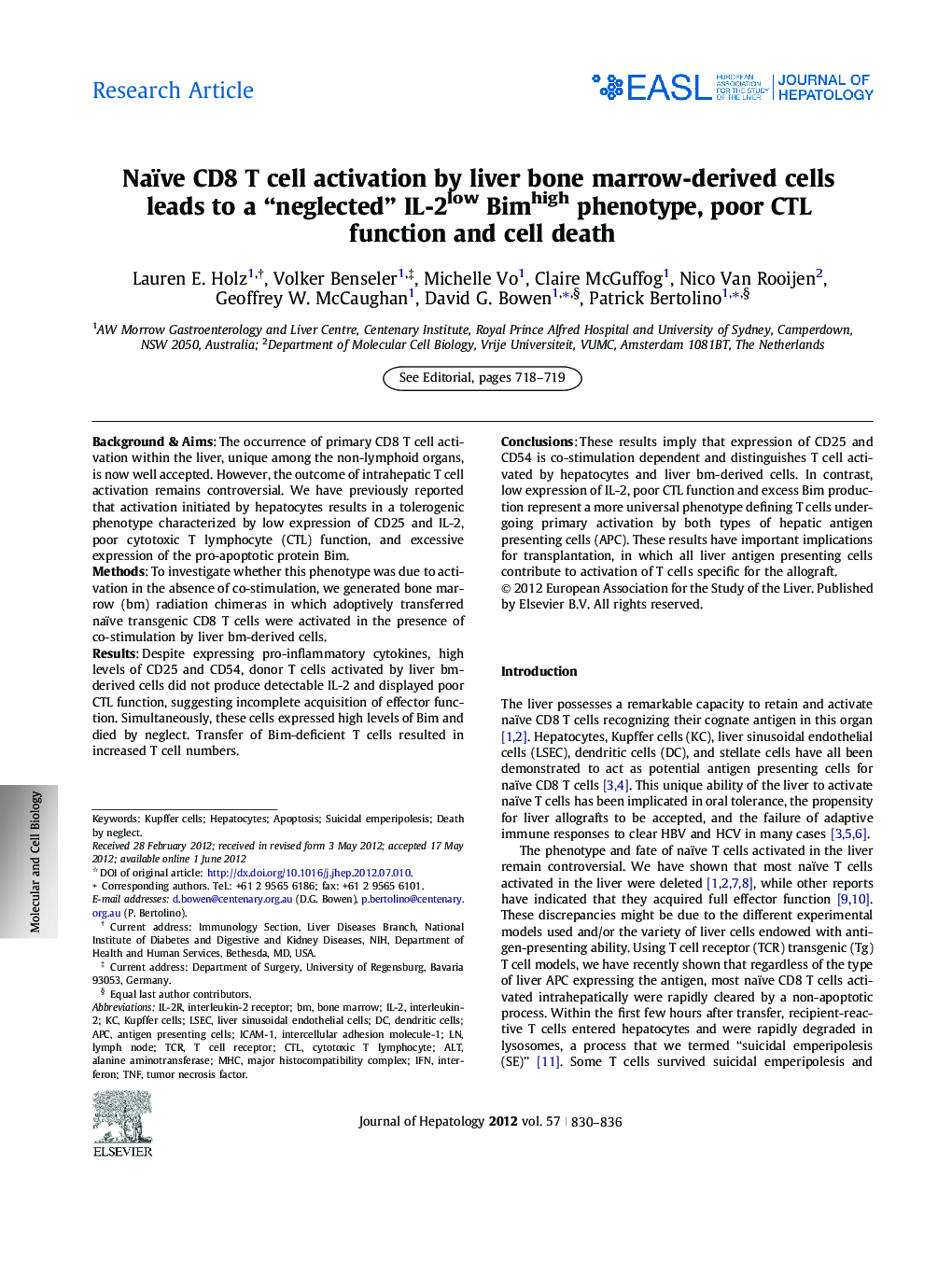| کد مقاله | کد نشریه | سال انتشار | مقاله انگلیسی | نسخه تمام متن |
|---|---|---|---|---|
| 6106333 | 1211160 | 2012 | 7 صفحه PDF | دانلود رایگان |

Background & AimsThe occurrence of primary CD8 T cell activation within the liver, unique among the non-lymphoid organs, is now well accepted. However, the outcome of intrahepatic T cell activation remains controversial. We have previously reported that activation initiated by hepatocytes results in a tolerogenic phenotype characterized by low expression of CD25 and IL-2, poor cytotoxic T lymphocyte (CTL) function, and excessive expression of the pro-apoptotic protein Bim.MethodsTo investigate whether this phenotype was due to activation in the absence of co-stimulation, we generated bone marrow (bm) radiation chimeras in which adoptively transferred naïve transgenic CD8 T cells were activated in the presence of co-stimulation by liver bm-derived cells.ResultsDespite expressing pro-inflammatory cytokines, high levels of CD25 and CD54, donor T cells activated by liver bm-derived cells did not produce detectable IL-2 and displayed poor CTL function, suggesting incomplete acquisition of effector function. Simultaneously, these cells expressed high levels of Bim and died by neglect. Transfer of Bim-deficient T cells resulted in increased T cell numbers.ConclusionsThese results imply that expression of CD25 and CD54 is co-stimulation dependent and distinguishes T cell activated by hepatocytes and liver bm-derived cells. In contrast, low expression of IL-2, poor CTL function and excess Bim production represent a more universal phenotype defining T cells undergoing primary activation by both types of hepatic antigen presenting cells (APC). These results have important implications for transplantation, in which all liver antigen presenting cells contribute to activation of T cells specific for the allograft.
Journal: Journal of Hepatology - Volume 57, Issue 4, October 2012, Pages 830-836